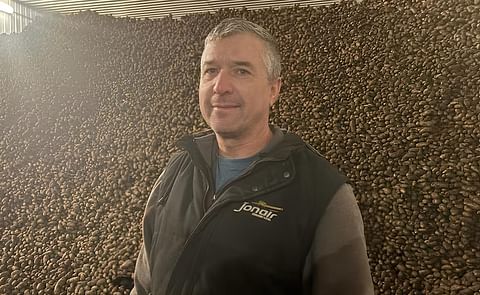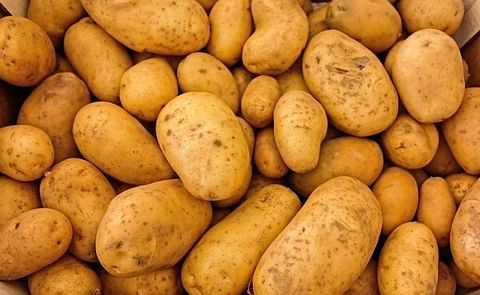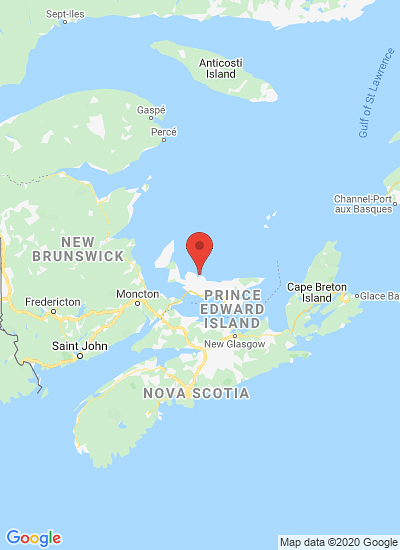Steve Watts of Genesis Crop Systems Inc, left, and farmer Vernon Campbell, show off some of Campbell's potatoes which were grown with new methods of fertilizer application, thanks to a collaboration with Living Labs Atlantic.
Prince Edward Island potato crops benefit from eco-friendly slow-release fertilizer in new research study
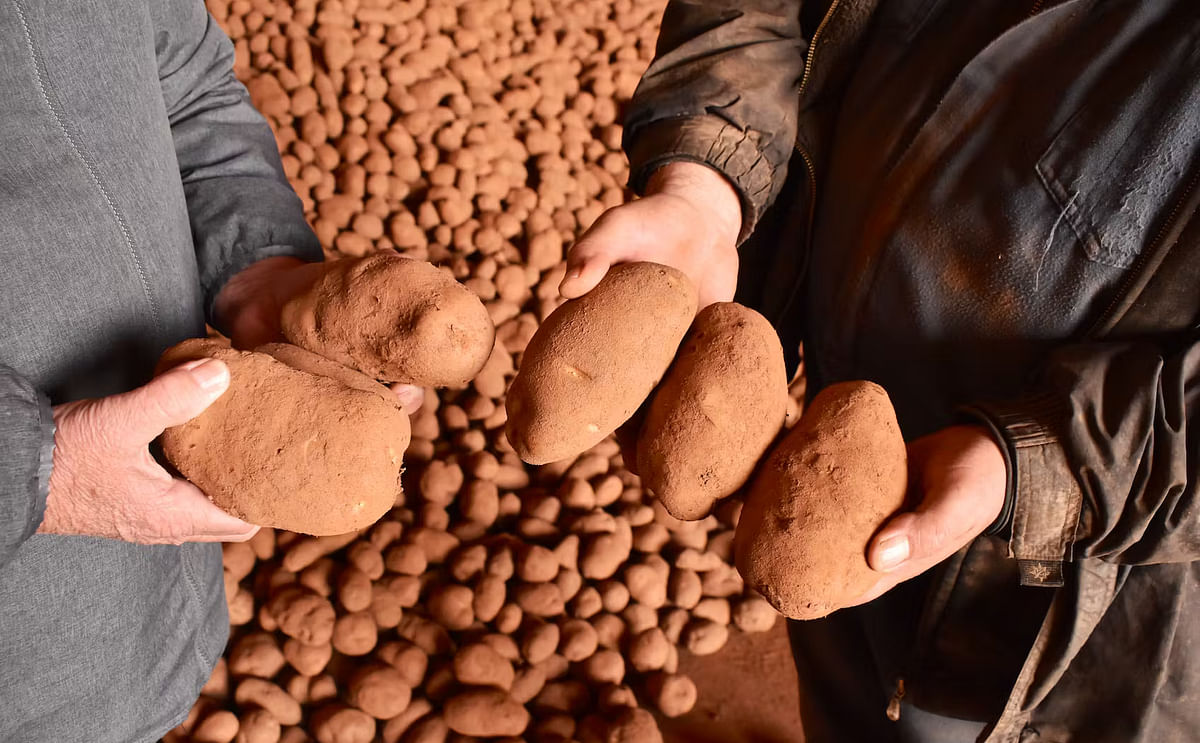
New research on Prince Edward Island has found a more environmentally friendly way to fertilize potatoes. Steve Watts from Genesis Crop Systems Inc. along with six farmers participated in the Living Labs Atlantic project to test out a slow-release nitrogen fertilizer, also called enhanced efficiency nitrogen.
They wanted to figure out the most efficient way to use the product while reducing the effect on the environment.
The result was a 30 per cent reduction in greenhouse gas emissions with the new application methods and, although fertilizer costs stayed the same, farmers used around 15 per cent less fertilizer per acre with no impact on yield.
Steve Watts:
Watts and his team were testing Super U, a urea-based nitrogen fertilizer that goes in the ground at or near planting time.
Unlike older nitrogen fertilizer technology, Super U has a coating that makes it dissolve more slowly so the potato plants get what they need at the right time.
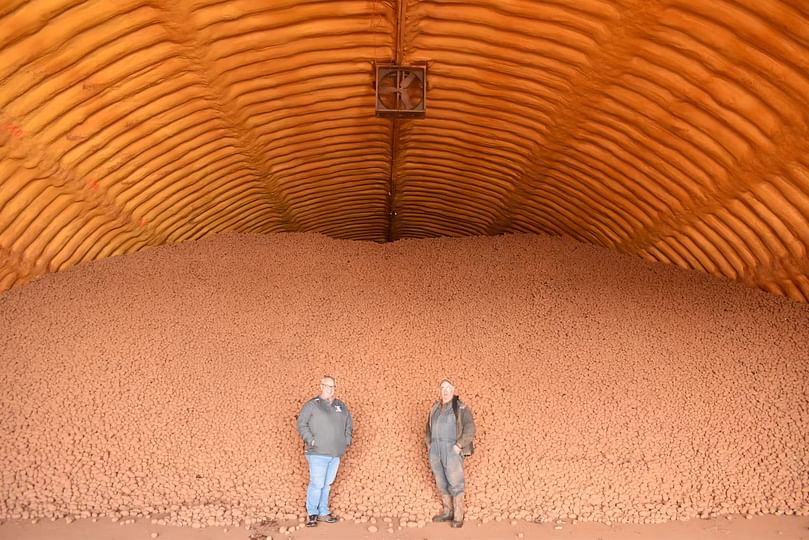 Vernon Campbell of Mull Na Beinne Farms has been part of the three-year project since its start in 2019. He compared potato plants to a potato manufacturing facility.
Vernon Campbell of Mull Na Beinne Farms has been part of the three-year project since its start in 2019. He compared potato plants to a potato manufacturing facility.
Vernon Campbell:
Vernon Campbell:
Best practices
Watts began Genesis Crop systems Inc. in 2012 to try and "do things better" when growing potatoes and over the years has worked with farmers to develop some best management practices.
 Partnering with Living Labs – a group of universities, government researchers and farmers – has allowed Watts to expand that research. Steve Watts:
Partnering with Living Labs – a group of universities, government researchers and farmers – has allowed Watts to expand that research. Steve Watts:
Steve Watts:
And the proof is in the (potato) pudding.
Vernon Campbell:
They wanted to figure out the most efficient way to use the product while reducing the effect on the environment.
The result was a 30 per cent reduction in greenhouse gas emissions with the new application methods and, although fertilizer costs stayed the same, farmers used around 15 per cent less fertilizer per acre with no impact on yield.
Steve Watts:
"Farmers like to consider themselves stewards of the land, so if I’m going to work with growers to try to improve things, certainly we need to be thinking about the whole environmental impact to what we do."Fine-tuning
Watts and his team were testing Super U, a urea-based nitrogen fertilizer that goes in the ground at or near planting time.
Unlike older nitrogen fertilizer technology, Super U has a coating that makes it dissolve more slowly so the potato plants get what they need at the right time.

Steve Watts of Genesis Crop Systems Inc, left, and farmer Vernon Campbell take a moment to discuss their collaboration on a nitrogen fertilizer trial with Living Labs Atlantic at Campbell's farm March 27. (Courtesy: SaltWire Network)
Vernon Campbell:
"The first half of the plant’s life is vegetative - it’s putting up the factory. Then the balance of the life, it’s reproductive, ie: it’s going into the tubers for the next generation and that’s when you really need a bump of nutrients to provide for the next generation."Since it’s not efficient or beneficial to apply fertilizer to potato fields mid-season, Super U and other slow-release products are exciting options.
Vernon Campbell:
"This is far better for greenhouse gas and … there’s always been a concern about nitrates in our water and I think this is a way of reducing that risk."
About the project
Genesis Crop Systems Inc. and Living Labs Atlantic has managed to reduce greenhouse gas emissions by 30 per cent with a new method of fertilizing potatoes.
Here are a few fast facts about the project:
- They tested Super U, a urea-based granule sprayed with a urease and/or nitrification inhibitor that synchronizes nitrate availability with the plant’s needs which reduces nitrate leaching.
- Six farmers applied between 50 and 70 per cent of what they usually would at planting to their test plots.
- Greenhouse gas monitoring equipment was installed and checked weekly or bi-weekly. Plant petiole samples were collected twice in the season to measure N03-N petiole concentration.
- Six 10-foot strips of potatoes were hand-harvested, stored and evaluated for yield, quality and economic value.
- Post-harvest soil samples were collected and tested for residual NO3-N.
Best practices
Watts began Genesis Crop systems Inc. in 2012 to try and "do things better" when growing potatoes and over the years has worked with farmers to develop some best management practices.

Living Labs Atlantic works with farmers and researchers to develop more sustainable agricultural methods. (Courtesy: SaltWire Network)
"A key part of any nitrogen fertilizer trial work we’ve done in the last six or seven years is the capacity to actually measure greenhouse gas emissions off the field. I couldn’t do that by myself."Technicians from the P.E.I. department of agriculture came out to the field plots to collect vials of gas samples which were then analyzed at the Dalhousie University Faculty of Agriculture’s Burton Lab.
Steve Watts:
"The Living Labs program, over the last four years allowed us to take that (fertilizer research) to the next level where we quantified it more with the collaboration."Because of the rapport Watts has built with farmers before and during his Living Labs collaboration, the learnings are adopted into practice more easily than they might be if the methods were developed in a separate facility.
And the proof is in the (potato) pudding.
Vernon Campbell:
"We’re confident enough in the results that we have translated that from trials to all of our potato acreage."
Like to receive news like this by email? Join and Subscribe!
NEW! Join Our BlueSky Channel for regular updates!
精选企业
Sponsored Content
Sponsored Content
Sponsored Content
Sponsored Content
Sponsored Content


